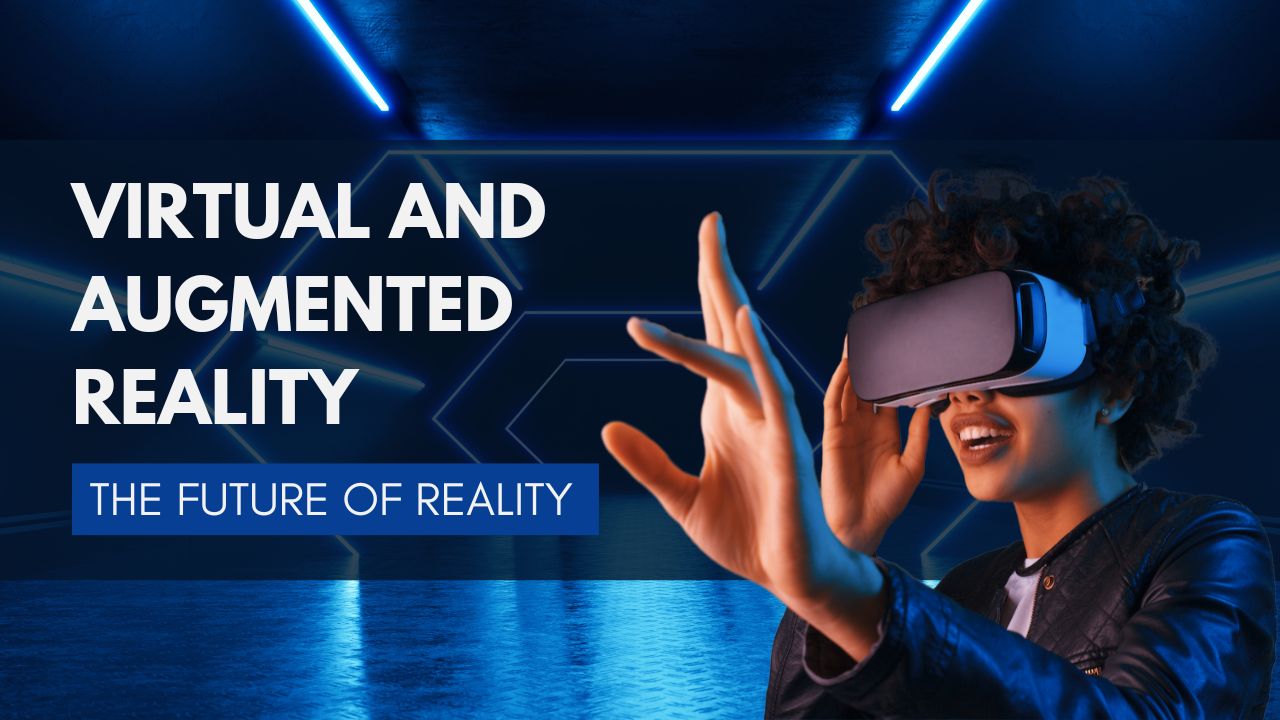
Virtual and augmented reality have been hot topics in recent years, with more and more companies investing in these emerging technologies. While virtual reality (VR) and augmented reality (AR) are often used interchangeably, they are actually quite different. VR immerses users in a completely artificial environment, while AR overlays digital information onto the real world.
In this article, we will explore the technologies behind VR and AR, their current applications, and their potential for the future.
What is Virtual Reality?
Virtual reality is a technology that uses computer-generated environments to simulate the experience of being somewhere else. VR typically involves the use of a headset with a screen or screens that display images and a set of controllers that allow users to interact with the virtual environment. The technology behind VR includes powerful graphics processing, motion tracking, and sound systems that create a fully immersive experience.
Types of VR Systems:
There are several different types of VR systems, including mobile-based, console-based, and PC-based systems. Mobile-based systems, such as the Google Cardboard, use a smartphone and a headset to create a VR experience. Console-based systems, such as the PlayStation VR, use a console and a dedicated headset to create a more powerful VR experience. PC-based systems, such as the Oculus Rift and the HTC Vive, use a powerful PC and a headset with sensors to create a high-quality VR experience.
Current Applications of VR:
VR has a wide range of applications, including gaming, education, and training. In the gaming industry, VR has the potential to create more immersive gaming experiences, allowing players to feel like they are actually inside the game. In education and training, VR can be used to simulate real-world scenarios, allowing users to practice skills in a safe and controlled environment.
Future Potential of VR:
As VR technology continues to improve, its potential uses are expanding. VR has the potential to revolutionize industries such as healthcare, architecture, and engineering. In healthcare, VR can be used for pain management and to simulate surgical procedures. In architecture and engineering, VR can be used to create 3D models and simulate building designs.
What is Augmented Reality?
Augmented reality is a technology that overlays digital information onto the real world. AR typically involves the use of a smartphone or a headset with a camera that captures the real world and displays digital information on top of it.
Types of AR Systems:
There are several different types of AR systems, including mobile-based, smart glasses, and heads-up displays. Mobile-based systems, such as the Pokemon Go app, use a smartphone to display digital information on top of the real world. Smart glasses, such as the Microsoft HoloLens, use a headset with a built-in camera to display digital information on top of the real world. Heads-up displays, such as those used in military aircraft, display critical information on a transparent screen that is overlaid onto the real world.
Current Applications of AR:
AR has a wide range of applications, including retail, entertainment, and healthcare. In the retail industry, AR can be used to create virtual try-on experiences, allowing customers to try on clothes and see how they look without having to physically try them on. In entertainment, AR can be used to create interactive experiences that merge the real and digital worlds. In healthcare, AR can be used to provide doctors with real-time information and guidance during surgical procedures.
The Future Potential of AR
Augmented Reality (AR) technology has come a long way since its inception, and today it has the potential to revolutionize the way we interact with the world. AR technology overlays digital information onto the real world, creating a mixed reality experience that has endless possibilities. In this article, we will explore the future potential of AR and the impact it could have on our lives.
Difference Between Augmented Reality and Virtual Reality
Augmented Reality (AR) and Virtual Reality (VR) are two distinct technologies that are often used interchangeably, but they are fundamentally different. Here’s a brief overview of the differences between AR and VR:
Augmented Reality (AR)
AR technology overlays digital information onto the real world, creating a mixed reality experience that blends the physical and digital worlds. AR applications use a device’s camera and sensors to detect and track the user’s surroundings, then superimpose virtual objects or information onto the real world.
AR is often used in applications such as mobile gaming, advertising, and navigation, and it has numerous potential uses in fields such as education, healthcare, and manufacturing.
Virtual Reality (VR)
VR technology creates a completely immersive, computer-generated environment that simulates a user’s physical presence in a virtual world. VR applications use a headset or other display device to completely block out the user’s physical surroundings and replace them with a digital environment.
VR is often used in applications such as gaming, training simulations, and virtual tourism, and it has numerous potential uses in fields such as architecture, engineering, and design.
Key Differences
The key difference between AR and VR is that AR overlays digital information onto the real world, while VR completely replaces the real world with a digital environment. AR enhances the user’s perception of reality by adding digital elements to it, while VR creates a completely new, simulated reality.
AR also tends to be more accessible than VR, as it can be used on devices that many people already own, such as smartphones and tablets. VR, on the other hand, typically requires specialized equipment and hardware.
Overall, AR and VR are two distinct technologies that offer unique experiences and have numerous potential applications in a variety of fields.
Challenges and Limitations
Despite the potential benefits of VR and AR, there are still some challenges and limitations that need to be addressed. One major challenge is the cost of the technology, as VR and AR systems can be expensive. Another challenge is the need for high-quality content that takes advantage of the technology.
There are also some limitations to the technology itself. For example, VR can cause motion sickness or disorientation in some users, while AR can be limited by the quality of the camera and the available lighting.
Advantages and Disadvantages of Augmented Reality and Virtual Reality
Augmented Reality (AR) and Virtual Reality (VR) are two technologies with many potential advantages and disadvantages. Here’s an overview of some of the key advantages and disadvantages of each:
Advantages of AR:
- Enhances real-world experiences: AR overlays digital information onto the real world, enhancing the user’s perception of reality and adding new layers of information to real-world experiences.
- Accessibility: AR can be used on devices that many people already own, such as smartphones and tablets, making it more accessible than VR.
- Potential for a wide range of applications: AR has many potential applications in fields such as education, healthcare, and manufacturing, and is already being used in areas such as mobile gaming and advertising.
Disadvantages of AR:
- Limited immersion: AR does not offer the same level of immersion as VR, as it does not completely replace the real world with a digital environment.
- Limited hardware capabilities: AR applications are often limited by the hardware capabilities of the devices they run on, such as camera resolution and processing power.
- Potential for distractions: AR can be distracting and may take attention away from real-world surroundings.
Advantages of VR:
- Complete immersion: VR offers a fully immersive experience that completely replaces the real world with a digital environment, providing a more immersive and engaging experience.
- Potential for a wide range of applications: VR has many potential applications in fields such as gaming, training, and simulation, as well as in areas such as architecture and design.
- Enhanced learning and training: VR can be used for realistic simulations and training programs, allowing users to learn and practice new skills in a safe and controlled environment.
Disadvantages of VR:
- High cost: VR equipment and hardware can be expensive, making it less accessible than AR.
- Potential for motion sickness: Some users may experience motion sickness or other physical discomfort when using VR, particularly if they are sensitive to motion or have pre-existing medical conditions.
- Limited social interaction: VR experiences are often solitary, and may not offer the same level of social interaction and connection as real-world experiences.
Overall, AR and VR are two distinct technologies with unique advantages and disadvantages, and their suitability for different applications will depend on the specific needs and goals of each individual use case.
Conclusion
In conclusion, virtual and augmented reality are exciting emerging technologies that have the potential to change the way we interact with the world. VR creates immersive digital environments, while AR overlays digital information onto the real world. While there are still some challenges and limitations to be addressed, the potential applications of VR and AR are vast, and we can expect to see more innovative uses of these technologies in the future.









